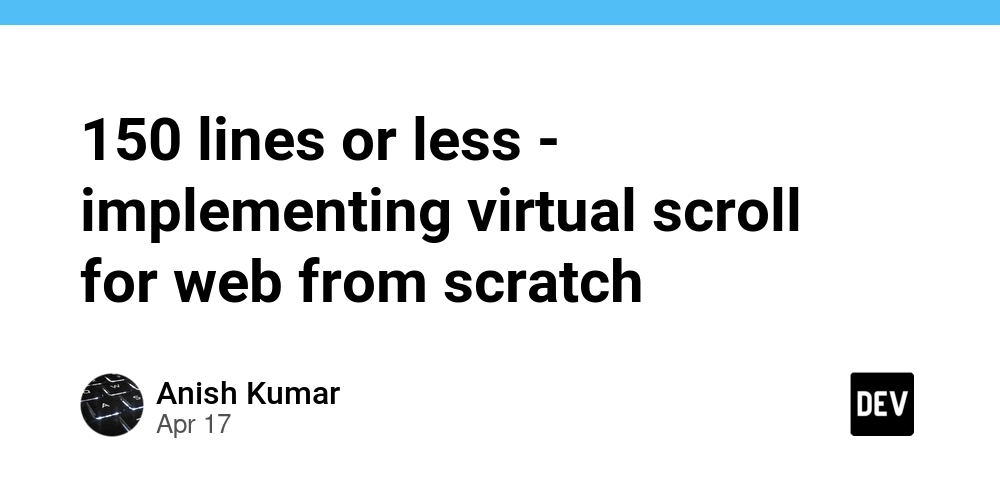Dev
1w
135

Image Credit: Dev
150 lines or less - implementing virtual scroll for web from scratch
- Virtual scroll, also known as virtualization or windowing, efficiently renders large lists in web applications by only loading visible items in the viewport.
- The implementation involves removing items outside the viewport from the DOM and adding new ones on-demand for smooth scrolling.
- Using ReactJS, a reusable component for virtual scroll can be created following specific principles that can be applied to any framework or vanilla JS.
- Initial steps include preparing a large list with random data and defining window size, row height, and data array for the virtual table.
- The core idea involves providing a fixed-size container for scrolling, calculating indexes based on scroll position, and maintaining desired scroll position using divs.
- Basic implementation includes tracking scroll position, calculating start and end indexes for shown items, and maintaining a list of rendered rows.
- Optimizations like buffering rows above and below the viewport and throttling scroll updates are crucial for smoother performance and reduced DOM churn.
- Buffering involves rendering extra rows around the viewport to prevent a snapping effect when items enter and exit the view.
- Throttling scroll updates helps in controlling state updates and improving performance by limiting the frequency of updates during rapid scrolling.
- The final implementation can be tested using jsPad, with possibilities for further enhancements and optimizations to make the virtual scroll more generic and performant.
Read Full Article
8 Likes
For uninterrupted reading, download the app